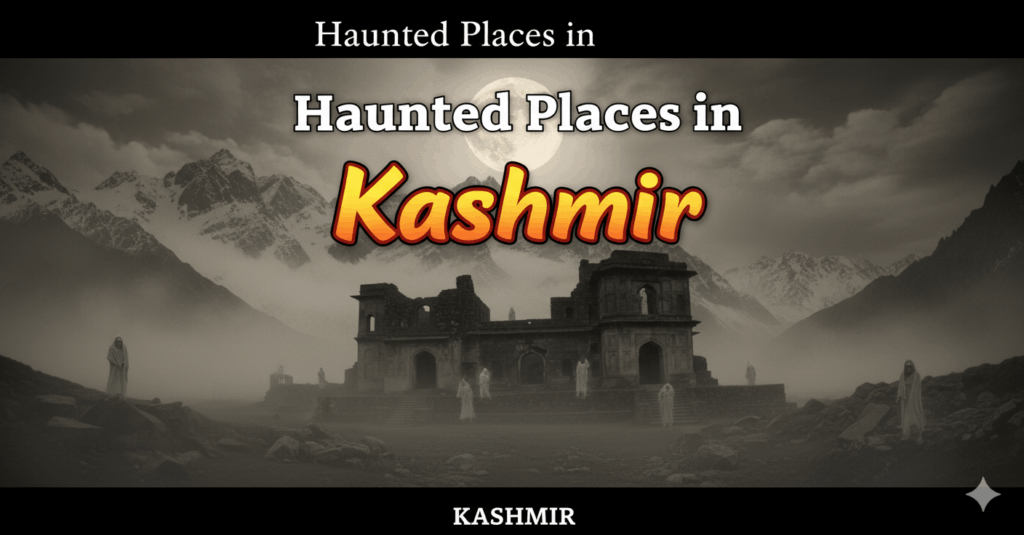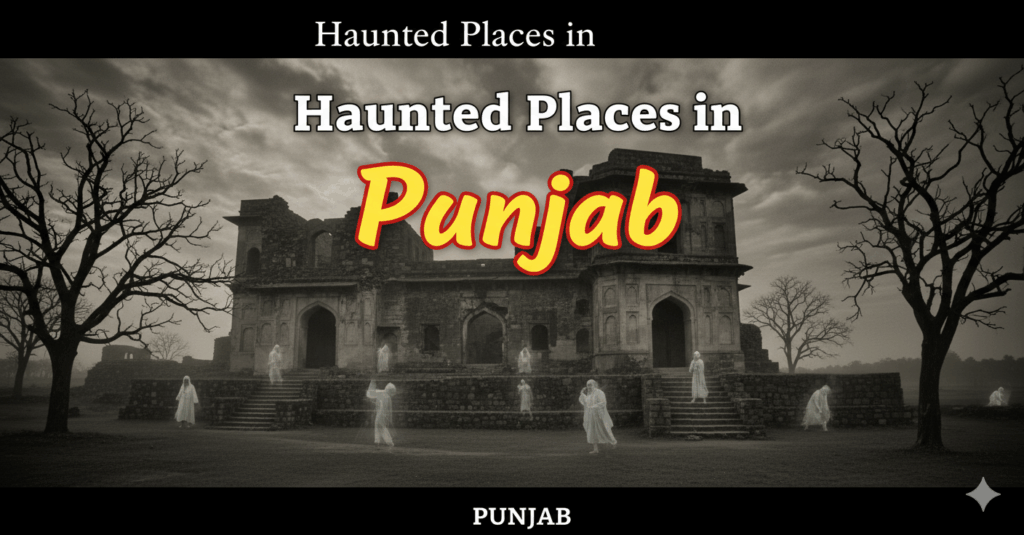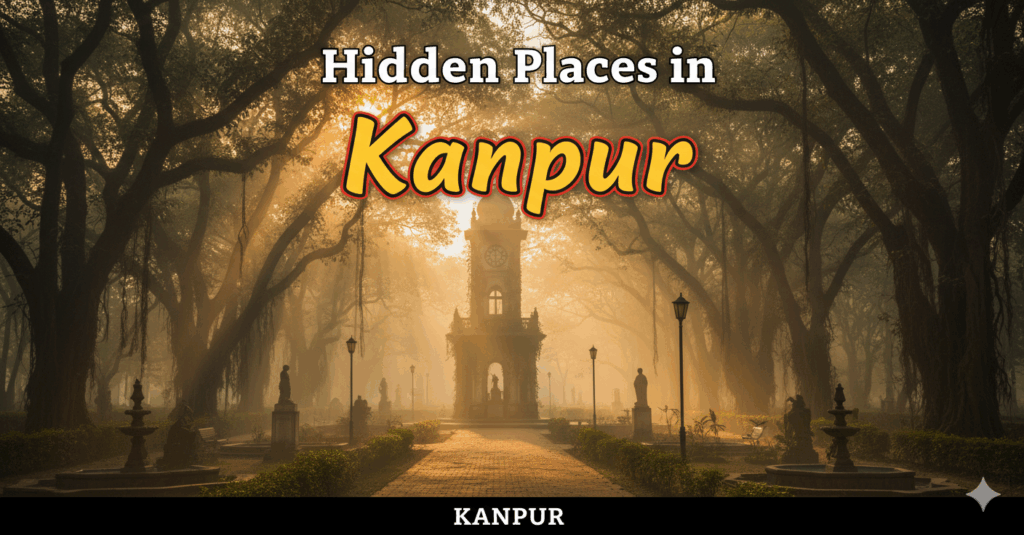Pokhran, located in the Jaisalmer district of Rajasthan, stands as one of India’s most historically significant desert towns and a fascinating blend of royal heritage with modern history. This ancient fortress town in the heart of the Thar Desert is renowned worldwide for being India’s nuclear testing site, while also showcasing magnificent Rajasthani architecture, ancient temples, and traditional desert culture. The places to visit in Pokhran offer a unique combination of historical fortresses, royal palaces, sacred temples, and desert landscapes, making it an ideal destination for history enthusiasts, culture lovers, architecture admirers, and travelers seeking authentic Rajasthani experiences.
Table of Contents
Places to Visit in Pokhran: Essential Information
Planning your visit to places to visit in Pokhran requires understanding the diverse historical and cultural attractions this desert town offers. From 14th-century forts housing heritage hotels to ancient temples and fascinating museums, each destination tells stories of Rajasthani valor and desert survival. Where is pokhran situated makes it strategically accessible – 112 km from Jaisalmer and 172 km from Jodhpur, perfectly positioned for desert exploration and cultural immersion.
| Top 7 Attractions | Details | Best Time | Entry Fee | Duration |
|---|---|---|---|---|
| 1. Pokhran Fort (Balagarh) | 14th century fort, heritage hotel | Morning 8-11 AM | ₹50-200 (confirm locally) | 3-4 hours |
| 2. Pokhran Fort Museum | Royal artifacts, weapons, paintings inside fort | Morning 9-12 PM | Included in fort entry | 1-2 hours |
| 3. Ramdevra Temple | Sacred pilgrimage site, colorful fairs | Early morning/Evening | Free | 2-3 hours |
| 4. Sati Mata Memorial Cenotaphs | Royal red sandstone memorials | Morning/Evening | Free | 1 hour |
| 5. Pokhran Crafts Bazaar | Traditional handicrafts, local culture | Morning 9-6 PM | Free | 2-3 hours |
| 6. Phool Mahal Palace | Royal palace with intricate artwork | Morning/Evening | Included in fort entry | 1-2 hours |
| 7. Desert Safari Points | Thar Desert experience, Sam Dunes excursions | Evening 4-7 PM | ₹1500-3000 per person | 3-4 hours |
Heritage Sites and Fortresses – Top 7 Places to Visit in Pokhran
The places to visit in Pokhran showcase centuries of Rajasthani royal heritage combined with unique historical significance as India’s nuclear testing site. Each location offers authentic experiences ranging from staying in royal palaces to exploring ancient architecture and understanding desert culture. These destinations represent both living heritage and modern historical importance.
1. Pokhran Fort (Balagarh) – 14th Century Desert Citadel
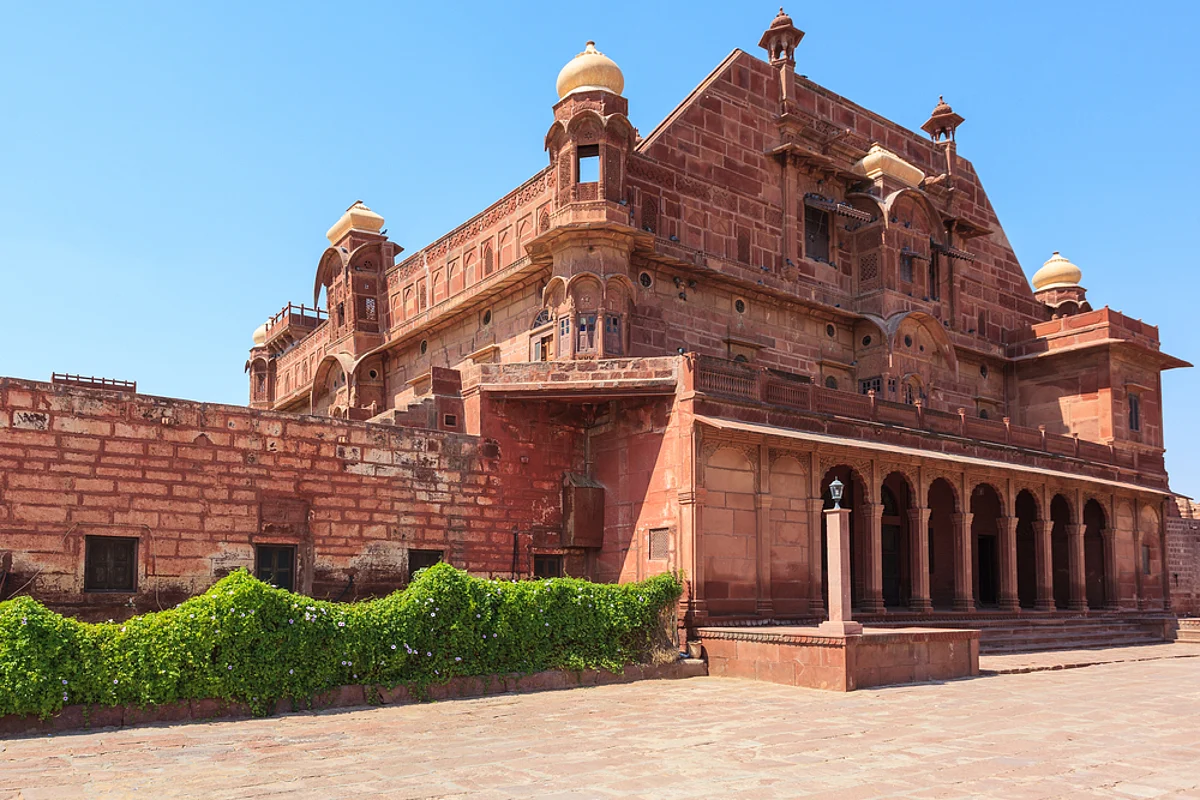
The most magnificent among places to visit in Pokhran, Pokhran Fort (Balagarh) is a 14th-century citadel traditionally associated with the Champawat branch of the Rathore clan from Marwar-Jodhpur. This golden sandstone fortress served as a crucial defense point along ancient trade routes crossing Rajasthan and stands as testament to desert architectural brilliance.
For travelers interested in exploring Rajasthan’s complete royal heritage, consider combining Pokhran with a comprehensive Rajasthan tour package from Mumbai that covers multiple historic forts and palaces across the state.
Architectural Marvel: Golden sandstone construction with massive gates featuring anti-elephant spikes
Royal Palaces: Houses Mangal Niwas, Phool Mahal, Hawa Mahal, and Rani Mahal with intricate carvings
Heritage Hotel: Portions converted into luxury accommodation offering royal living experiences
Fort Museum: Small heritage museum displaying local weapons, paintings, pottery, and royal costumes
2. Pokhran Fort Museum – Heritage Artifacts Collection
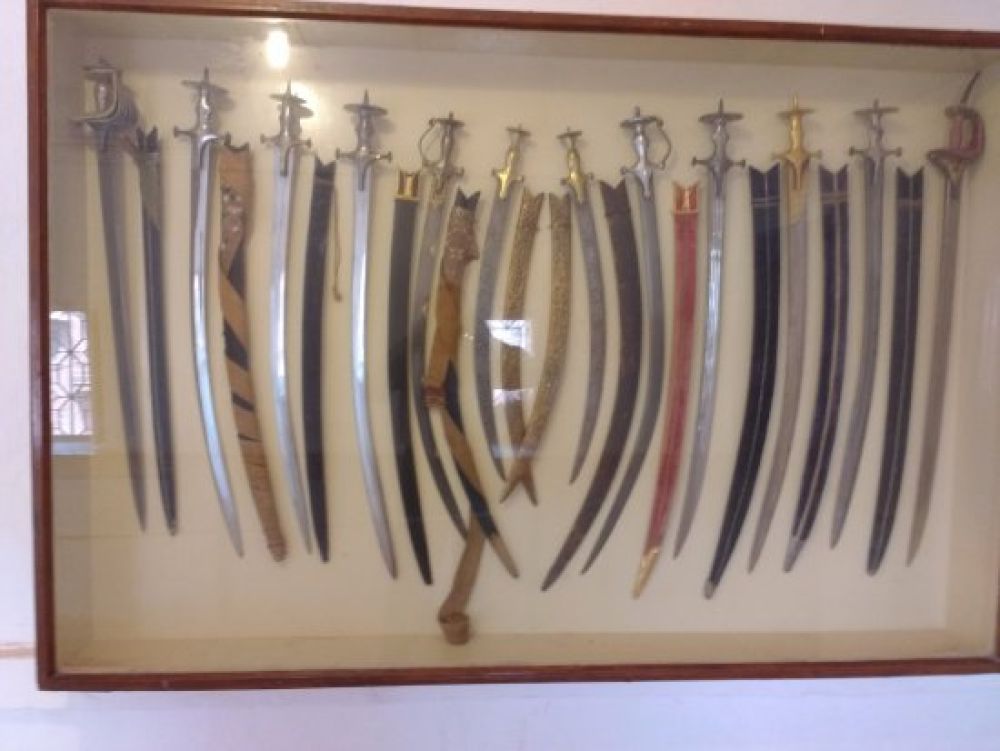
Located within the fort complex, this small heritage museum represents one of the most educational places to visit in Pokhran for understanding desert culture and royal lifestyle. The collection showcases local weapons, royal costumes, pottery, and artifacts accumulated over centuries.
Important Note: The actual Pokhran Test Range (site of India’s 1974 “Smiling Buddha” and 1998 Pokhran-II nuclear tests) is a restricted Army facility and is not open to the public. Learn more about India’s nuclear testing history from official government sources.
Local Artifacts: Ancient weapons, miniature paintings, royal costumes, and jewelry collections
Cultural Heritage: Traditional pottery and ceramic works demonstrating local artistic excellence
Royal History: Exhibits showcasing how desert royal families lived and governed
Practical Info: Typically open 9:00 AM – 5:00 PM, entry fees vary (confirm timings and fees locally)
3. Ramdevra Temple – Sacred Pilgrimage Destination
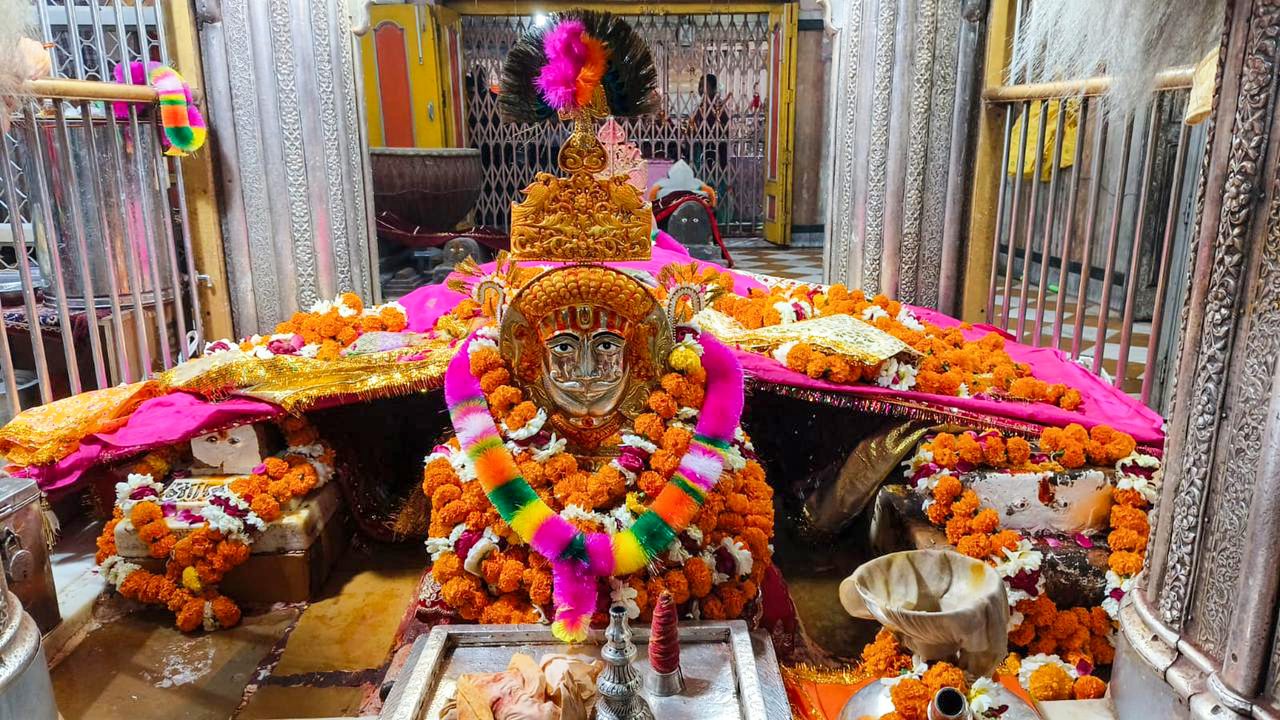
The Ramdevra Temple is built at the samadhi site of Baba Ramdevji, a revered 14th-15th century folk saint believed to be an incarnation of Lord Krishna. The present temple complex was developed later, with Maharaja Ganga Singh contributing to the structure in the early 20th century. Located about 10-12 km north of Pokhran, this temple attracts thousands of devotees year-round.
Cultural Shopping: Authentic souvenirs including wooden boxes, oil lamps, and carved antiques
Local Interaction: Direct engagement with desert communities and traditional craft techniques
The Ramdevra Temple is built at the samadhi site of Baba Ramdevji, a revered 14th-15th century folk saint believed to be an incarnation of Lord Krishna. The present temple complex was developed later, with Maharaja Ganga Singh contributing to the structure in the early 20th century. Located about 10-12 km north of Pokhran, this temple attracts thousands of devotees year-round.
Spiritual Significance: Built at the samadhi site of Baba Ramdevji, revered by both Hindus and Muslims
Festival Celebrations: Famous Ramdevra Fair held annually during Bhadrapada (August-September) attracting multistate devotees
Cultural Programs: Traditional Rajasthani folk music, dance performances, and puppet shows during fairs
Pilgrimage Importance: Major pilgrimage destination with devotees from across India seeking blessings
4. Sati Mata Memorial Cenotaphs – Royal Red Sandstone Heritage
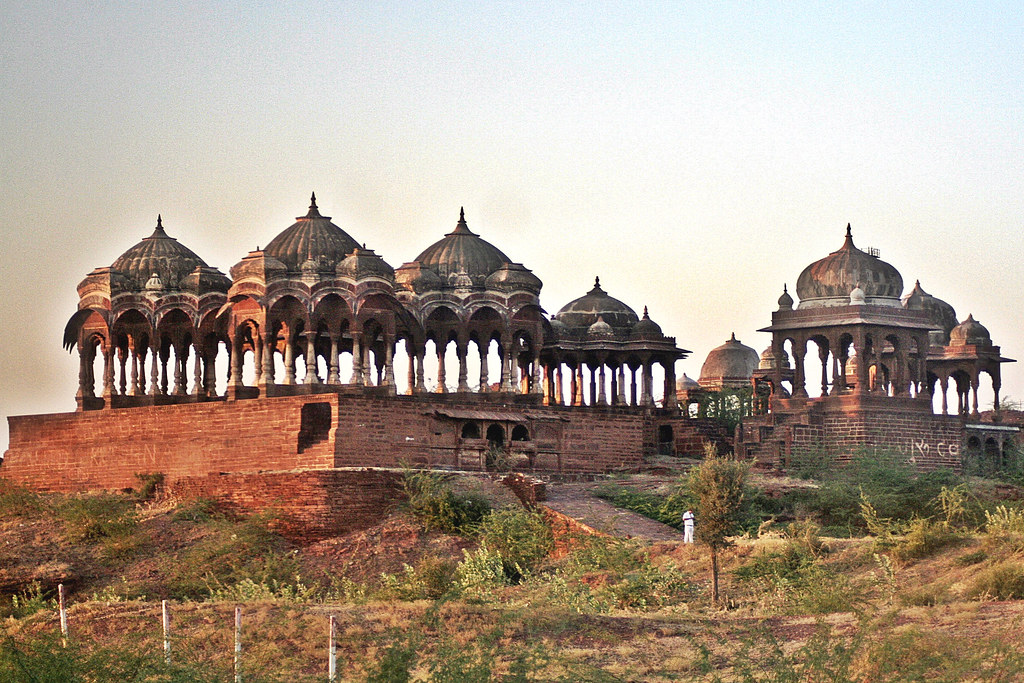
These magnificent red sandstone cenotaphs, also known as Shakti Mata Memorial Chatriya, are located on the outskirts of Pokhran and represent one of the most architecturally significant places to visit in Pokhran. Built to honor royal family members and brave queens, these memorials showcase traditional chhatri architecture and provide insights into historical royal customs.
Architectural Excellence: Traditional chhatri design with central domes supported by intricately carved pillars
Royal Heritage: Memorials dedicated to Pokhran’s royal lineage and historical figures
Artistic Beauty: Exquisite stone carvings, decorative patterns, and sculptural details
Photo Opportunity: Popular spot for photography with stunning desert backdrop
5. Pokhran Crafts Bazaar – Traditional Handicrafts Hub
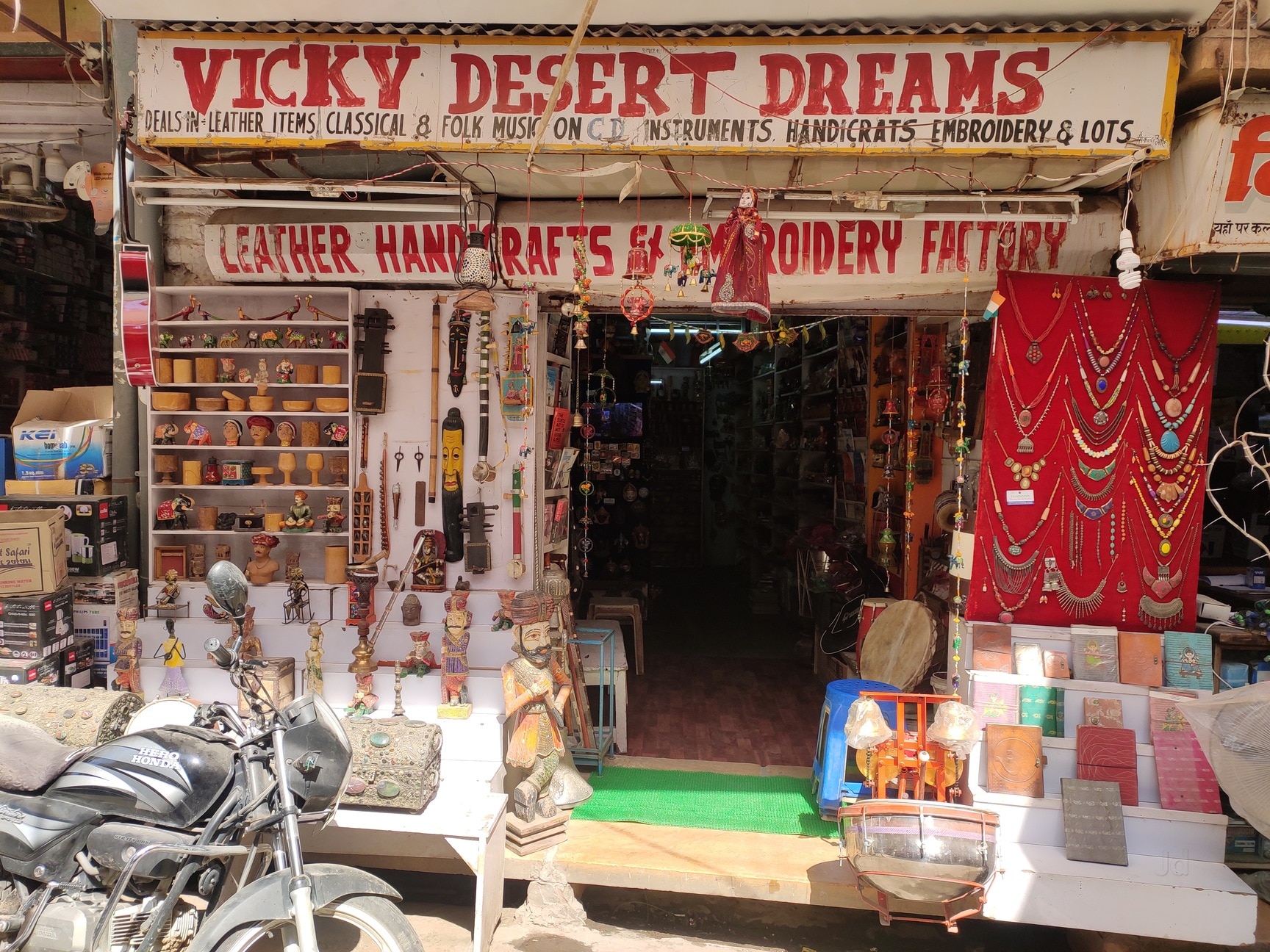
This vibrant marketplace offers authentic Rajasthani handicrafts and provides one of the most culturally immersive things to do in Pokhran. Local artisans showcase traditional crafts including camel leather work, mirror embroidery, and desert textiles that reflect centuries of desert survival and artistic excellence.
Traditional Crafts: Camel leather items, mirror work textiles, embroidered garments, and woolen pattu
Artisan Workshops: Opportunities to observe potters, weavers, and craftsmen creating traditional items
6. Phool Mahal Palace – Royal Architectural Masterpiece
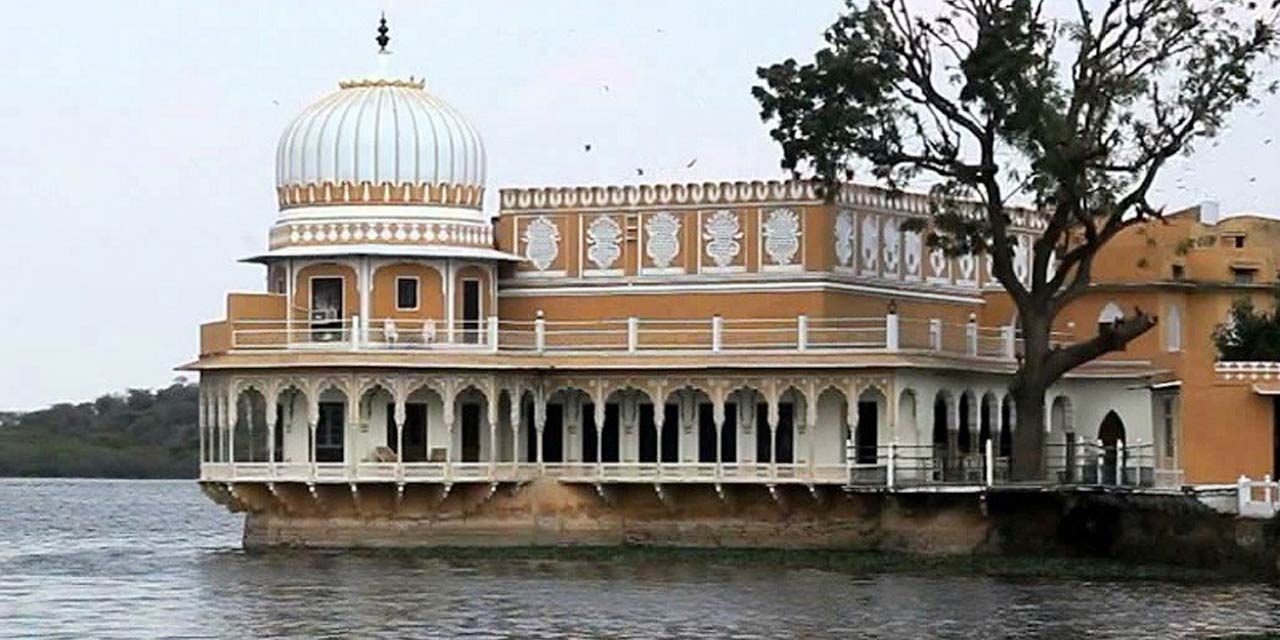
This stunning palace within the fort complex showcases exceptional Rajasthani royal architecture among things to do in Pokhran. The palace features beautiful artwork, intricate sculptures, and luxurious chambers that reflect the sophisticated lifestyle of desert royalty during the royal period.
Visitors fascinated by royal palaces and lake cities should also consider exploring Rajasthan’s romantic destinations through an Udaipur tour package from Mumbai, which offers stunning lakeside palaces and romantic heritage experiences.
Architectural Features: Fusion of Rajasthani architecture with ornate balconies and courtyards
Artistic Heritage: Beautiful frescoes, mirror work, and detailed stone carvings throughout
Royal Chambers: Preserved rooms showcasing desert royal living traditions
Photography Paradise: Stunning backdrops for capturing authentic Rajasthani architectural beauty
7. Desert Safari and Sam Sand Dunes Excursions
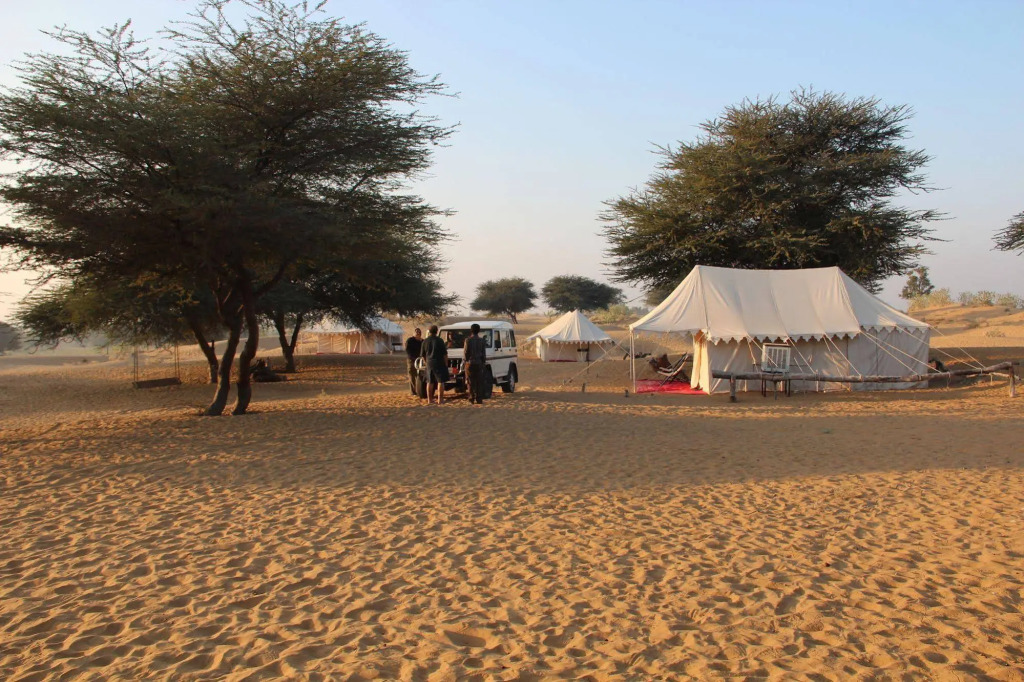
The vast Thar Desert surrounding Pokhran offers spectacular desert experiences including excursions to famous destinations near Jaisalmer. These desert adventures provide comprehensive experiences of desert life and stunning sunset views.
Sam Sand Dunes (Jaisalmer): Famous golden dunes are about 150 km by road from Pokhran (plan a long day or overnight stop in Jaisalmer)
Kuldhara Village: Mysterious abandoned village near Jaisalmer (~17 km from Jaisalmer), expect about 120-130 km travel time from Pokhran depending on route
Desert Camping: Overnight stays under starlit skies with cultural entertainment programs
Adventure Activities: Camel rides, jeep safaris, and traditional desert experiences
How to Get to Places to Visit in Pokhran
Where is pokhran situated makes it easily accessible from major Rajasthani cities and provides excellent connectivity for desert exploration. Pokhran (Pokaran) is located in Jaisalmer district, Rajasthan, about 112 km east of Jaisalmer, approximately 172 km northwest of Jodhpur, and approximately 225 km south of Bikaner by road.
By Road – Most Convenient Option
Pokhran lies on the Jaisalmer-Jodhpur highway, making road travel convenient. Regular bus services and taxi options connect to Jaisalmer (112 km), Jodhpur (172 km), and Bikaner (225 km). The scenic desert drive offers stunning landscapes and glimpses of traditional desert life.
By Rail – Well-Connected Network
Pokhran Railway Station connects to the Jaisalmer-Jodhpur rail line with regular passenger trains. The station provides convenient access to the town center and major attractions, with local transportation readily available.
By Air – Regional Airports
Jodhpur Airport (172 km) offers the closest air connectivity with domestic flights to Delhi, Mumbai, and other major cities. Jaisalmer Airport (142 km) provides limited connectivity but serves as an alternative for air travelers.
Things to Do in Pokhran: Timings and Practical Information
Understanding operating schedules and practical details enhances your experience across places to visit in Pokhran. Most attractions operate during cooler hours to provide comfortable exploration of desert heritage sites.
Major Attraction Timings
- Pokhran Fort: Typically 9:00 AM – 5:00 PM (Heritage hotel operates 24/7) – confirm timings locally
- Pokhran Fort Museum: Usually included with fort entry, same operating hours
- Ramdevra Temple: Generally 9:00 AM – 6:00 PM, extended hours during fair seasons
- Crafts Bazaar: Usually 9:00 AM – 6:00 PM daily, some shops close during afternoon heat
- Desert Safari: 4:00 PM – 7:00 PM for optimal sunset experiences
- Cultural Programs: Evening 6:00 PM onwards at heritage venues and desert camps
Seasonal Considerations
- Winter Season: October to March offers pleasant weather ideal for sightseeing and desert activities
- Ramdevra Fair Season: Biannual celebrations attract thousands of pilgrims and cultural enthusiasts
- Cattle Fair Season: Traditional livestock markets during harvest and festival periods
- Summer Caution: April to September extremely hot with temperatures reaching 46°C, limited outdoor activities
Best Time to Visit and Travel Planning
Timing your visit to places to visit in Pokhran significantly impacts your comfort and experience quality due to the extreme desert climate. Understanding seasonal weather patterns, festival schedules, and optimal travel periods helps maximize enjoyment while avoiding harsh conditions. Proper planning ensures visitors can fully appreciate both cultural attractions and desert activities.
Optimal Seasons
Winter (October-March): Pleasant weather with temperatures 5-30°C, ideal for fort exploration and desert activities
Monsoon (July-September): Limited rainfall but still warm, some attractions may have modified schedules
Summer (April-June): Extremely hot with temperatures up to 46°C, not recommended for tourism
Festival Opportunities
- Ramdev Fair: Biannual celebrations (August and February) with cultural programs and pilgrimage activities
- Desert Festival Season: Various cultural events throughout winter months
- Heritage Celebrations: Special events at fort and palace venues during peak season
Accommodation and Local Experiences
Pokhran offers unique accommodation options that allow visitors to experience authentic desert royalty and traditional Rajasthani hospitality. From staying within historic fort walls to enjoying cultural programs under starlit desert skies, accommodation choices enhance the overall travel experience. Understanding local customs and cultural activities helps visitors make the most of their desert heritage journey.
Heritage Accommodation
Fort Pokaran Heritage Hotel: Royal family-operated luxury accommodation within the historic fort premises offering authentic royal living experiences
Desert Resorts: Traditional Rajasthani architecture properties providing cultural immersion with modern amenities
Budget Options: Local guesthouses and dharamshalas offering basic facilities for budget-conscious travelers
Cultural Experiences
- Traditional Cuisine: Authentic Rajasthani thali featuring dal-baati-churma, ker-sangri, and desert specialties
- Handicraft Shopping: Camel leather items, mirror work, embroidered textiles, and traditional pottery
- Folk Performances: Evening cultural shows featuring traditional music, dance, and storytelling
Travelers seeking to explore broader western India cultural diversity can extend their journey with a Gujarat tour package from Mumbai, which offers complementary experiences of desert culture, ancient temples, and vibrant handicrafts.
Conclusion
Understanding pokhran fort history enriches your appreciation of this remarkable heritage site that spans both ancient royal legacy and modern historical importance. The fort’s evolution from medieval stronghold to nuclear testing proximity creates a unique narrative combining traditional Rajasthani architecture with contemporary Indian history. Exploring this historical context provides deeper insights into Pokhran’s multifaceted significance.
For detailed information about Pokhran’s cultural and historical significance, visitors can reference Incredible India’s official guide to Pokhran, which provides comprehensive insights into this desert town’s multifaceted heritage.
For expertly planned Rajasthan tours featuring Pokhran’s diverse attractions, choose itineraries that optimize fort exploration timings, cultural program schedules, and desert safari experiences while respecting local traditions. Visit us at VDP Travels, Neighbourhood Complex, F- 5, near SBI Bank, Sector 4, Nerul, Navi Mumbai, Mumbai, Maharashtra 400706. For detailed tour packages with knowledgeable guides and comprehensive regional planning, call +91 99675 18405, or contact VDP Travels.
Places to Visit in Pokhran – FAQs
What are the main places to visit in Pokhran?
The seven essential destinations include Pokhran Fort (Balagarh), Pokhran Fort Museum, Ramdevra Temple, Sati Mata Memorial Cenotaphs, Pokhran Crafts Bazaar, Phool Mahal Palace, and Desert Safari experiences.
Is the Pokhran nuclear test site open to visitors?
No – the Pokhran Test Range is a restricted Army facility. Visitors cannot enter the actual test site, but can learn about the nuclear tests through public sources and historical information.
How far is Ramdevra Temple from Pokhran?
Ramdevra Temple is about 10-12 km north of Pokhran. It hosts the annual Ramdevra fair during Bhadrapada (August-September) attracting devotees from multiple states.
What are the timings for Pokhran Fort and museum?
Pokhran Fort typically operates 9:00 AM – 5:00 PM. The fort museum is usually included with fort entry. Entry fees vary (₹50-200) – confirm timings and fees locally before visiting.
Where is Pokhran situated exactly?
Pokhran is located in Jaisalmer district, Rajasthan, about 112 km east of Jaisalmer, approximately 172 km northwest of Jodhpur, and approximately 225 km south of Bikaner by road.
What are the best things to do in Pokhran?
Top activities include fort exploration, heritage museum visits, temple pilgrimage, crafts bazaar shopping, heritage hotel stays, desert safaris, and cultural evening programs.
How far are Sam Sand Dunes and Kuldhara from Pokhran?
Sam Sand Dunes are about 150 km by road from Pokhran (near Jaisalmer). Kuldhara is near Jaisalmer (~17 km from Jaisalmer), expect about 120-130 km travel time from Pokhran.
When is the best time to visit places to visit in Pokhran?
October to March offers pleasant weather (comfortable temperatures for sightseeing). The annual Ramdevra Fair during August-September provides enhanced cultural experiences.
What accommodation options are available in Pokhran?
Fort Pokaran Heritage Hotel offers royal living experience within the historic fort. Other options include desert resorts with traditional architecture and budget guesthouses.
What can visitors expect at Pokhran Fort Museum?
The fort museum displays local weapons, paintings, pottery, and royal costumes. Note that there is no public museum about nuclear weapons – the test range is a restricted military facility.


